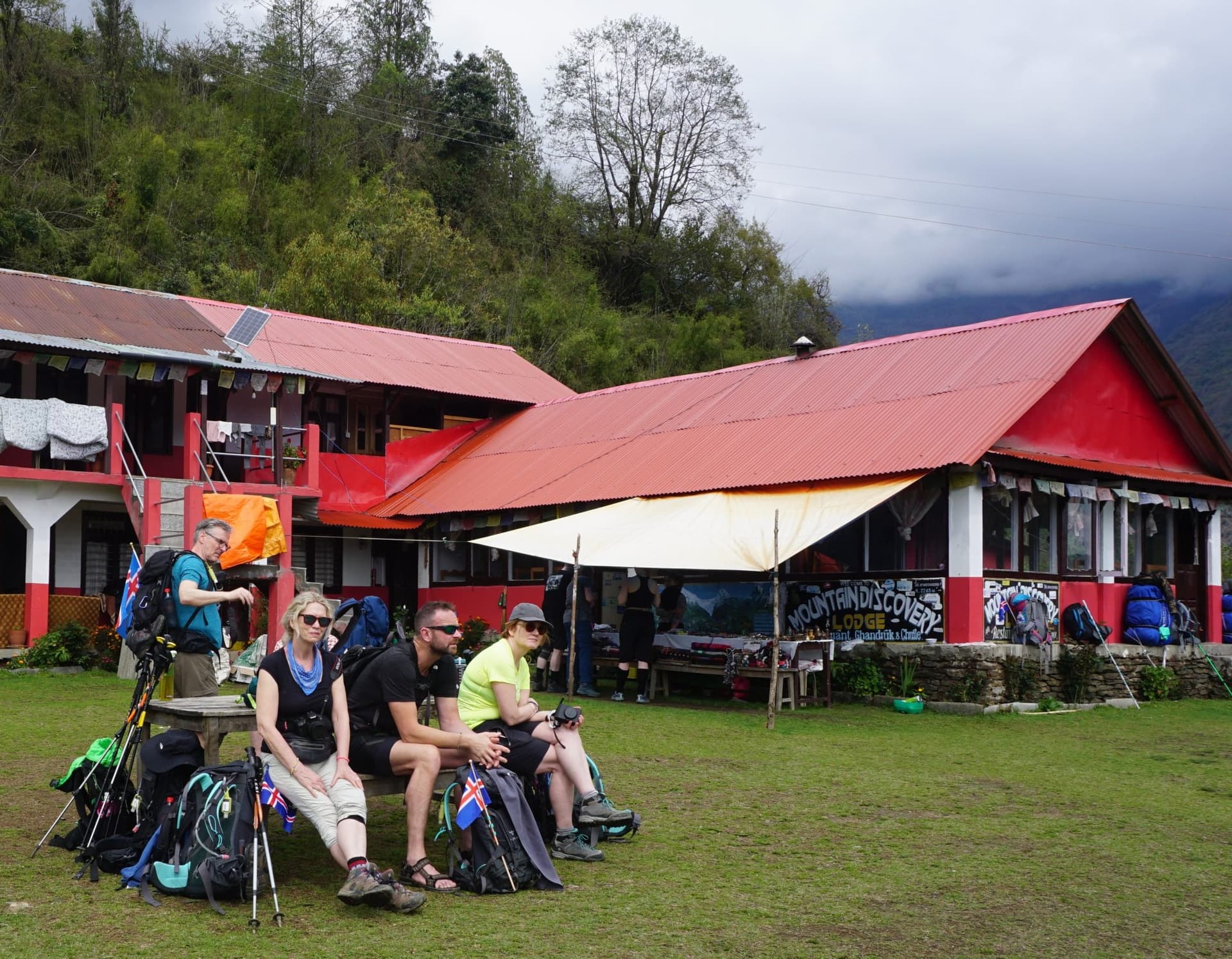Any passionate trekker who loves being in the mountains must surely have trekked in Nepal or have heard about its famous trails. Nepal is a prime destination for Himalayan trekking. Home to eight of the fourteen eight-thousanders in the world and several other smaller mountains, this tiny landlocked nation is a must-visit destination for avid trekkers. A huge chunk of tourists visiting Nepal annually are trekkers.
The Himalayan trails, which snake across hills, mountain passes, and river valleys, have been a big draw for foreign tourists. But were these trails in Nepal built only for tourists? The answer is no.
Walking trails have been in use in Nepal since time immemorial. Because of its mountainous terrain, roads could not be built, and people relied on their legs (or horses) to move from village to village or from village to town. It was only in the late 1950s that the first public transport system was introduced in the country. The first bus service ran between Kathmandu and Patan.
Moving to 2023, the scene hasn't changed much in the remote mountainous regions. People living in Khumbu, Tsum, Upper Dolpa, and the remote far east and far west regions still have to walk for days to reach the nearest road or STOL airport. So, for native Nepalis living in the mountains, trekking or hiking is not an outdoor sport or recreational activity. It is a way of life.
History of Trekking in Nepal
Nepal has been a center of Hindu and Buddhist spiritualism since time immemorial. So there was an influx of Hindu sages, Buddhist monks, and pilgrims from the Indian sub-continent as well as from Tibet and China, much before Nepal became a 'tourism hub'. These pilgrims and holy men made their journey on foot and walked across the Himalayas to visit Nepal.
The earliest recorded visits of Westerners in Nepal were by Christian missionaries who entered the country via Tibet. Jesuit fathers and the Capuchin monks walked to Kathmandu during the seventeenth and eighteenth centuries. The Capuchin friars were invited by the Malla kings in 1715, and they journeyed from India to Kathmandu on foot.
Later in the 1800s and the early part of the twentieth century, a lot of British surveyors, adventurers, and mountaineers received permission from the Rana rulers to explore the mountainous regions of Nepal. The discovery of the world's tallest mountain, Mount Everest (South Face), in Nepal, also ignited a lot of interest in the Western world about this remote Himalayan kingdom.
Toni Hagen, a Swiss geologist who walked across the length and breadth of Nepal in the 1950s and 1960s and recorded his journey in his book 'Nepal: The Kingdom in the Himalayas', is credited with introducing the remote foothills of Nepal Himalaya to the Western world.
The first batch of American volunteers of the Nepal Peace Corps who arrived in Nepal in 1962 and went on to teach and work at remote mountain villages were probably the first Westerners to experience Nepalese rural life.
The first mountaineering expedition groups were also the first Westerners to trek in Nepal. Eric Shipton and Bill Tilman's names figure prominently in the list of the first adventurers who trekked through the wild Himalayan foothills. Bill Tilman later trekked through Langtang, Annapurna, and Solu Khumbu in the late forties and fifties.
The ascent of Mount Everest by Edmund Hillary and Tenzing Norgay in 1953 from the Nepal side further aroused the curiosity of the whole world about Nepal. But before the world’s highest mountain was conquered, an eight-thousand-meter peak was scaled by a group of French mountaineers.
Annapurna I became the first major mountain, or eight thousander, to be climbed in Nepal. The feat was achieved in 1950 by a French expedition group led by Maurice Herzog.
History of Trekking in Annapurna
The Annapurna Region is one of the most well-known trekking regions in the world. The region covers the northwestern and central portions of the Nepal Himalaya, from the Marshyangdi River to the Kali Gandaki River. The region is named after the Annapurna Range, which stretches over the Gandaki Province. Annapurna is the goddess of abundance, and the Gurung community, which lives on the foothills of the Annapurna mountains, regards the peaks as the sanctuary of the gods. Fishtail Peak, or Machhapuchre, an iconic mountain in the Annapurna Region, is regarded as a sacred mountain by the Gurungs. It remains one of the highest unclimbed mountains in Nepal, as climbing is banned on this peak.
The trekking trails of Annapurna became popular after tourism was introduced to the country in the 1960s. However, before that, a Japanese Buddhist monk had walked through the region. Ekai Kawaguchi, a Zen Buddhist monk from Japan, trekked through what is now known as the Annapurna Circuit while making his way to Tibet from India. During his journey, he spent some months in Marpha. His book, titled "Three Years in Tibet," describes his perilous journey across the Himalayas and his stay in Tibet at the tail end of the nineteenth century.
The unmatched beauty of the Annapurna Circuit took the trekking world by storm after commercial expeditions were organized by Mountain Travel, the first trekking agency in Nepal. Mountain Travel was the brainchild of Col. Jimmy Roberts, a retired British army officer who pioneered fully organized trekking holidays in Nepal. Through his agency, tourists from North America, Europe, Australia, and New Zealand could book multi-day treks to the Everest Region and Annapurna Region.
During the initial days, when tourism in Nepal was still in its infancy, tourists had to rough it out. Outside of Kathmandu, there were no hotels or lodges. There were no teahouses on the trail either, and the ration needed for the entire duration of the trek had to be carried by porters or mules. Tents were pitched for the guests to sleep in. The trails, devoid of roads or proper bridges, were wild and dangerous for the Western tourists. Trekkers loved this raw experience and the number of tourist who wanted a Himalayan trek in Nepal multiplied.
The Annapurna Circuit introduced trekkers to Nepal's fascinating mix of cultures, religions, architecture, and landscapes. It went on to become one of the most popular treks in the world. Though the popularity of the Annapurna Circuit has waned after the building of roads in the Mustang Region, trekkers still choose to walk on this classic trail to experience its grandeur.
The Annapurna Base Camp Trek introduced tourists to the mid-hill villages of the Gurung and Magar communities. In 1981, Prince Charles, along with his 90-strong entourage, trekked the foothills of the Gandaki zone. The route he took traversed through the villages of Gurkha soldiers who served in the British army. The trail walked by him is now known as the Royal Trek.
Conclusion
The trekking trails in Nepal have transformed a lot since they were first opened for commercial trekking. The advent of foreign trekkers in the mountain villages has helped boost the local economy and improve the lives of the villagers. Since the late 1960s, the government as well as local villagers, have worked together to develop the foot trails and improve the facilities offered to tourists. At present, Nepal has some of the best trekking trails in the world.



